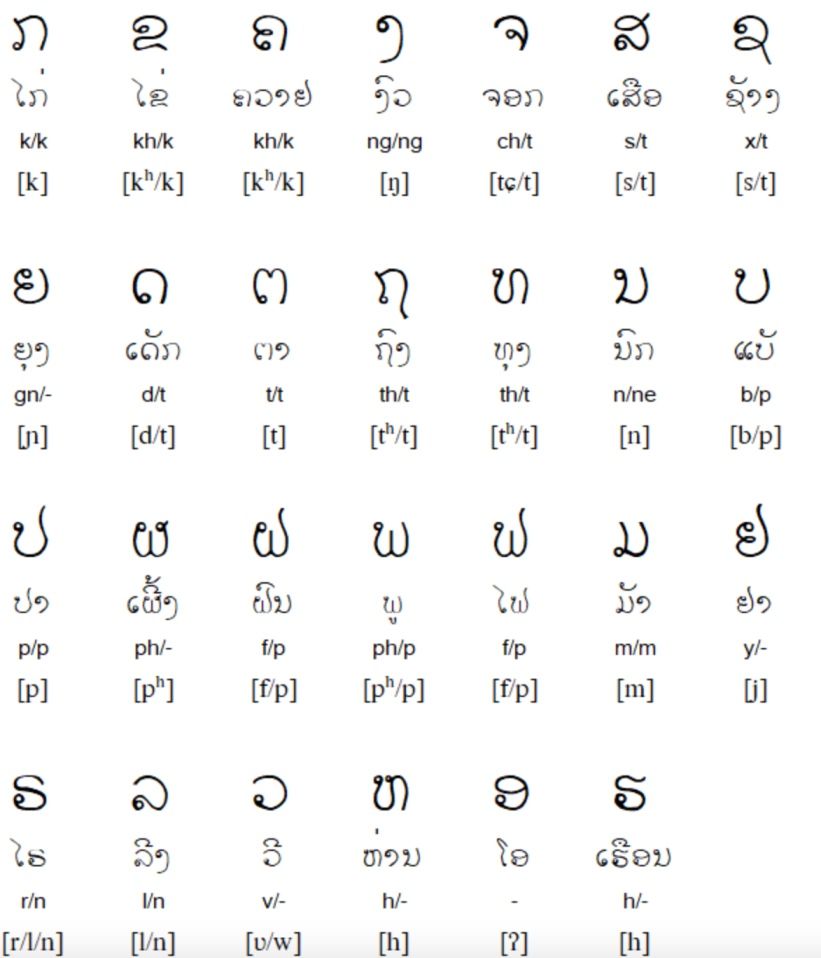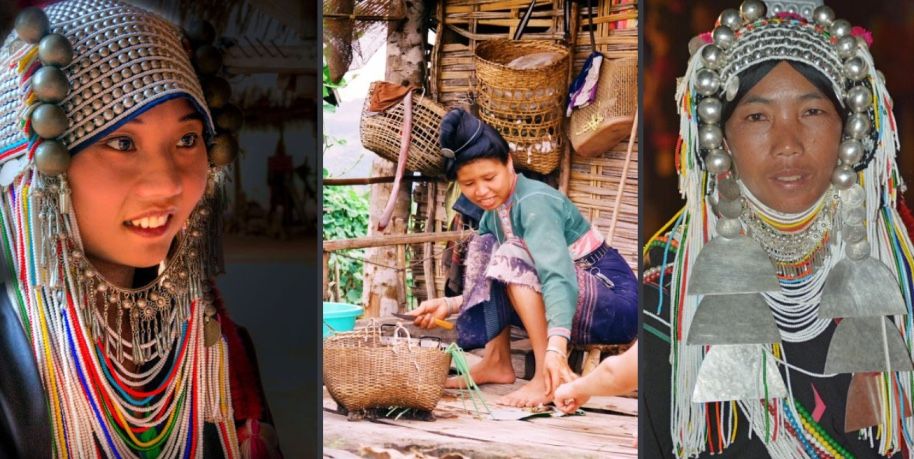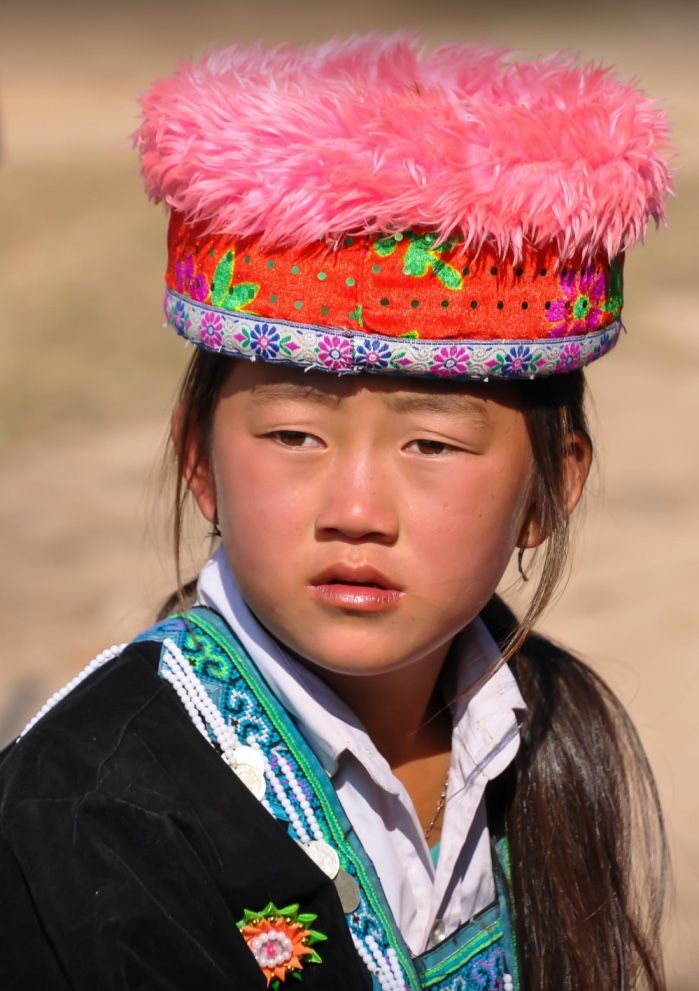A Guide to Lao, the official Language spoken in Laos
Lao, or Laotian is the official language spoken in Laos which belongs to the group of Tai language in Southeast of Asia. Laos language, occurs in various dialects, which differ significantly from one another. These dialects differ as much as Lao, as a group, differs from the Tai dialects of northeastern Thailand.
Lao generally uses monosyllabic word forms and tones to distinguish between words that would otherwise be pronounced the same as in Tai. Lao is the primary language of the Laos and is spoken in northeastern Thailand province of Island, therefore known as the Isan language.
Tai language family which also includes Thai, Shan, and languages spoken by smaller tribal groups in Laos, Thailand, Burma, southern China, and northern Vietnam. Additionally, Tai language shares similar grammar and tonal structure spoken in the area.
Explore Laos on our best deal Laos tours & holidays

History of the Laos language
The Lao language evolved from the Tai languages, a closely related family of languages, with Thai, the language of Thailand, being its most prominent spoken language. The migration of the Tai peoples toward India, the Malay Peninsula, and down the Mekong River valley was influenced by factors such as the expansion of Han Chinese, Mongol invasions, and the search for suitable lands for the rice cultivation. During these movements, earlier groups speaking Austroasiatic and Austronesian languages either assimilated or were displaced by Tai speakers in what is now the country of Laos.
The minority languages spoken in Laos
Lao (or Laotian) is the official national language, spoken by 52% of Laos’ population. In addition, over 80 languages are spoken by various ethnic groups across the country. The most common are Khmu and Hmong. Other minority languages include Akha, Arem, Bana, Katu, Ksingmul, Maleng, Lamet, Phai, Tai Daeng, Phu Thai, Tai Dam, and few others. Here we introduce widely spoken minority languages in Laos.
Anyway, if Thai silk sounds too expensive, you may consider purchasing smaller items crafted from Thai silk, such as ties, handkerchiefs, or purses. Numerous establishments, including Queen Thai Silk, Narai Phand, and Jim Thompson Outlet, provide a range of Thai silk products within Thailand.
Khmu Tribes
Around 500,000 ethnic minorities who speak Khmu dialect living in the five northern provinces of Laos: Bokeo, Luang Prabang, Luangnam Tha, Oudomxay, and Phongsaly. Their spoken language is part of the Austroasiatic family, include closely related dialects like Kniang, Puoc, and O’du, which make up the Khumuic group.
Khmu languages feature distinctions & variations in consonant counts, and differences in vocabulary. Although generally intelligible, these variations can make communication difficult between speakers from distant regions.
Although primarily spoken within the Khmu community, many Khmu tribes are fluent in the dominant dialects of their region. Many speak three or four other minor dialects. They all however, speak official Lao language to communicate with government officials, other people in the lowlands Laos, and in educational sector.

Hmong minorities
The Hmong language is spoken by the Hmong community residing in the mountainous regions of Laos, Thailand, Burma, and China & Vietnam, with two primary subgroups: White Hmong (or Hmong Daw) and the Green/Blue Hmong (or Hmong Njua). Despite their proximity, Hmong Daw serves as the dominant language, and the Hmong writing system, comprising eight or twelve sounds, mirrors the pronunciation of the Hmong Daw dialect.

Foreign languages spoken in Laos (Other than Lao)
In addition to the official Laos language, foreign languages other than Lao play key roles, particularly in tourism development. Immigration languages spoken in Laos include Khmer, spoken by refugees from Cambodia who fled the war and now live mostly in the southwestern region near the Cambodia and Thailand borders. There are also Lao speakers of Chinese descent, who migrated from provinces in China like Sichuan, Yunnan, Guizhou, Guangxi, and Guangdong. Most of them speak Cantonese and Teochew, with a few speaking Southwestern Mandarin.
Vietnamese and Thai are widely understood, especially near Laos’ borders. Of all foreign languages spoken in Laos, French and English are the most commonly used, especially in major tourist centers.
French language in Laos
Laos back in 1970 and earlier days, used to be the second-largest French-speaking country in Southeast Asia, after Cambodia and Vietnam. But not anymore, nowadays, you barely find any young population who speak and understand French in Laos. However, back in the days, French spread to Laos after French explorers arrived in the 19th century and established a colonial protectorate. Unlike in Vietnam, the French did not colonize Laos but introduced their language to schools in Vientiane in the early 1900s.
How well is English spoken in Laos?
Just in big cities and not much in general. English has become the most widely spoken language in Laos and has grown in importance, especially in the tourism industry. Many academic institutions and schools in Laos now require English as a compulsory subject.
English is widely understood in Vientiane and other major tourist areas, spoken by both older people who learned it during the Vietnam War and younger people interested in to speak it today. However, other than big cities, you barely find anyone who speaks and understand English.
How hard is the Lao Alphabet to learn?
Once started to study the basics of Laos language, it become relatively easy to learn as you’ll quickly understand various Lao dialects and Thai, as both belong to the Tai-Kadai language root.
Fun facts about Lao language
- In Lao, words do not have spaces between them, except to indicate the end of a phrase.
- There have been talk on working to reduce the number of consonants in Lao, as many of them represent the same sound.
How to Write and Read in Lao alphabet?
Structure and Characters
Lao alphabet enjoys both short and long vowel sounds, which add to the language’s melodic quality. Vowel symbols appear above, below, before, or after consonants, creating a visually captivating script.
The Essential Phrases You'll Need in Laos
Even if you never fully understand the curvy squiggles of the Lao alphabet, learning these essential Lao phrases will earn you favor with the locals. Since Lao lacks an official transliteration system into the Latin alphabet, you might see the same word spelled in various ways. With few grammar rules, no punctuation, and no spaces between words, Lao can be a challenging tonal language for travelers. But here are the most important vocabulary to know during your trip in Laos;
Basic Expressions / Common Words
| Good morning / Good evening | Sabaï dii / None lap fan dii |
| How are you? | Sabaï dii bo ? |
| Fine, thank you, and you? | Sabaï dii, khop tchaï, lè tchao dè ? |
| I understand / I don’t understand | khaphachao khao tchaï / Khoï bo khao tchaï |
| Sorry | Kho thot |
| Goodbye | La kone |
| Welcome | Nyinditonhab |
| Thank you (very much) | Khop tchaï laï laï |
| Excuse me | Excuse khaphachao / Kalounaa |
| My name is… | Khoï suu… |
| No thank you | Bo khop tchaï |
| Yes / No | Tchao / Bo |
| You’re welcome | Than nyinditonhab |
Shopping
| How much is it? | Laka tao daï ? |
| It is very cheap | Bo peng |
| It is too expensive! | Peng phôt |
| Can you lower the price? | Lout laka daï bo ? |
| I would like to buy … this one! | Khaphachao yakcha su… thini |
| I like it / I don’t like it | Khaphachao hak / Khaphachao sang |
| Money | Ngoen |
| I’m just looking around. | Khaphachao phiangaet sokha |
Transportation
| I would like to go to … | Diak… |
| Plane | Gnyone |
| Boat | Heua |
| Train | Kanfukobhom |
| Taxi | Lot taxi |
| Bus | Lot mé |
| I would like to rent … | Khaphachao tongkan thichahai seoa… |
| Motorbike | Lot chak |
| Car | Lot keng |
| Bike | Lot thiip |
Directions
| Where is …? / How can I get to …? | Bonthi pen… ? / vithikan pai… ? |
| Bank | Thanakane |
| Train station | Satannii |
| Centre | Meuong |
| Hotel | Hong hèm |
| Hospital | Hong mo |
| Is it close / far? | Pid bo ? / kaï bo ? |
| Straight ahead | Paï su |
| Left / Right | Saï / khoua |
| North / South / East / West | Thit neua / thit taï / Thit tavén ok / Thit tavén tok |
Numbers
| one, two, three, four, five, six, seven, eight, nine, ten | Nung, song, sam, sii, haa, hok, tiét, pèt, kao, sip |
| twenty, thirty, forty, fifty, sixty | Sao, sam sip, sii sip, haa sip, hok sip |
| seventy, eighty, ninety | tiét sip, pèt sip, kao sip |
| One hundred | Loï |
Hours / Date
| What time is it? | Singthi saiuaelaaemn vaman ? |
| When? | Naiuaela thi ? |
| Yesterday | Muuaanni |
| Today (morning/midday/evening) | Naimuni (tonsao / thiang / tonaelng) |
| Tomorrow | Muun |
| Monday, Tuesday, Wednesday, Thursday, Friday, Saturday, Sunday | Chan, vnoangkhan, vanphud, vanphahad, vansuk, vansao, vnoathid |
| I am here on vacation | Khaphachao kiauakabkan phak / kandoenthang |
| I am here for business | Khaphachao yuthini soalabkan heduaiak / thulakid |
At the Restaurant
| I am hungry / I am thirsty | Cha hiv / cha hiv |
| Enjoy | Khuaamsuk |
| Cheers! | Khongthan |
| It was delicious | Sèp laaï |
| What can you recommend? | Singthithan naenoa? |
| I am vegetarian | Khaphachao vegetarian pen |
| Not spicy please (I don’t like spices) | Bo saï mak phèt |
| It’s too hot | Manpen hon koenpai! |
| I am allergic | Khaphachao koedoakan aeph |
| Seafood | Ahanthale |
| Peanuts | Thouadin |
| Gluten | Gluten |
| I would like… | Khoï yak… |
| Water | Nam |
| Coffee | Am sa / Kafé |
| Beer / Wine | Bia lao |
| The bill, please | Chèk bin, kalounaa |
Discover Thailand in the way that suits you best. See the highlights on a Classic Tour, immerse yourself on a Discovery Tour, enjoy comfort and style on a Deluxe Tour, or explore your own way on a Private Tour or Independent itinerary. check out Thailand Private Tours




